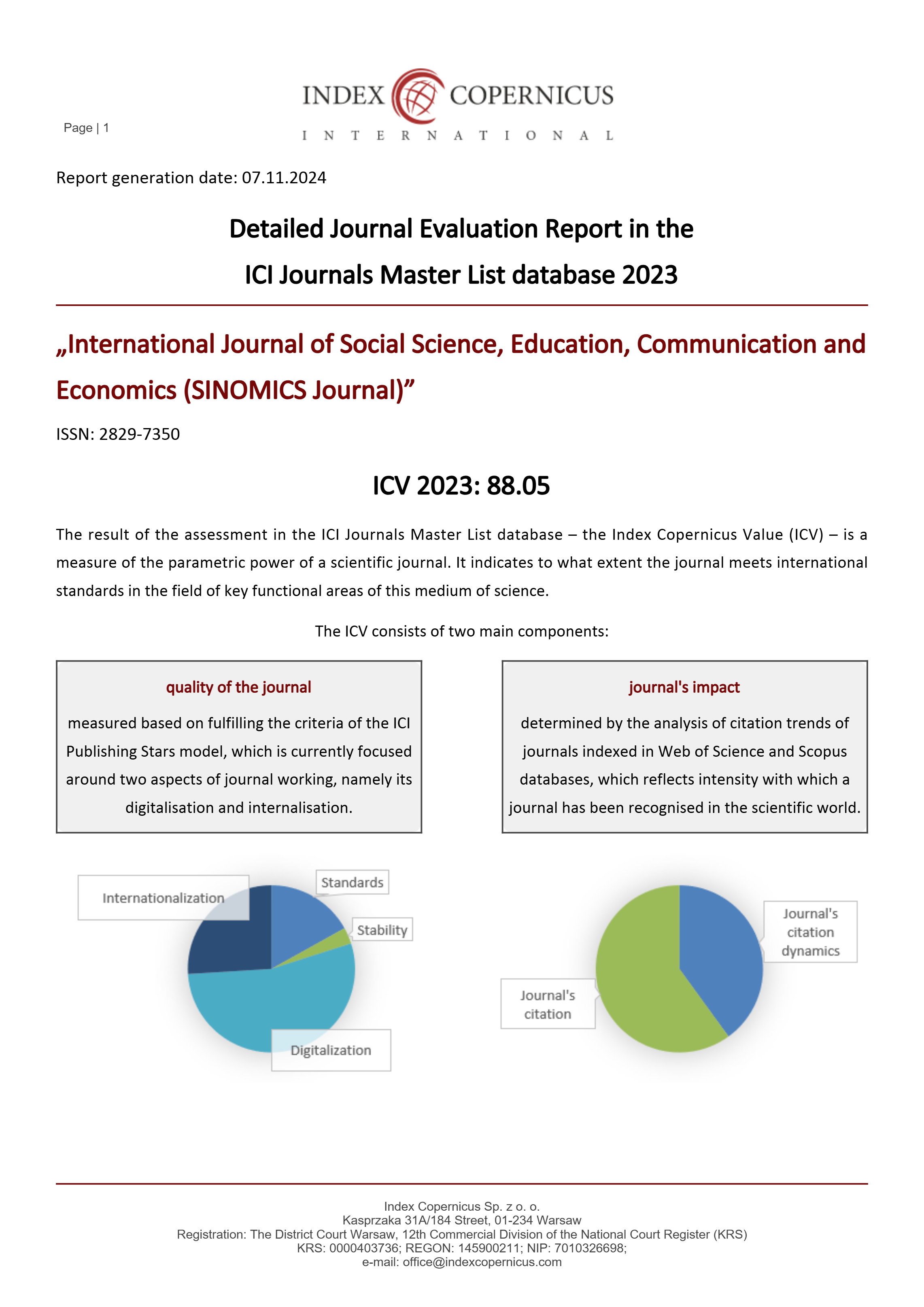Effectiveness of Mindfulness Therapy to Reduce Depression Levels in Female Prisoners
Main Article Content
Siti Nurhikmah
Elfa Diah Suslianingrum
Sisri Dewita
This research is a quantitative research using a one group pretest-posttest design experimental method with the aim of the research to determine the effectiveness of mindfulness therapy in reducing levels of depression in female prisoners. Subject selection was carried out by purposive sampling. The subjects involved were five female prisoners who had the BDI-II category of moderate depression with a minimum sentence of less than one year in prison. The level of depression was measured using the BDI-II (Beck Depression Inventory) scale by Beck (1976). The BDI-II scale was given before and after being given mindfulness therapy and the data collected was analyzed using a paired sample t-test and effectiveness test. The results of the study showed that there was a significant difference in the level of depression, where the average level of depression decreased after receiving the intervention, the level of depression in subjects who previously had an average score of 25.4 decreased to 17.6. This shows that the intervention provided in the form of mindfulness therapy can reduce the level of depression in the subject. To test whether the results of the intervention were significant or not, the researcher also carried out a significance test using paired sample t-test analysis, but first the researcher carried out a normality test on the research data. Based on the results of the Difference Test analysis, a significance value of 0.022 (p<0.05) was obtained, meaning that there was a significant difference between the pretest and posttest scores, so it could be concluded that there was a decrease in the level of depression in research subjects after being given intervention in the form of mindfulness therapy.
Beck, A.T. & Emery, G. (1985). Anxiety disorder and phobias. USA: Herper Collins Publishers.
Chamberlain, J. M. & Haaga, D. A. F. (2001). Unconditional self- acceptance and psychological health. Journal of Rational-Emotive and Cognitive-Behavior Therapy, 19(3), 163–176.
Crane, R. (2009). Mindfulness-based cognitive therapy: The CBT distinctive features series. London: Routledge.
Cooper, C. & Berwick, S. (2001). Factors affecting psychological well-being of three groups of suicide-prone prisoners. Current Psychology, 20(2), 169-182.
Direktorat Jendral Pemasyarakatan. (2019). Sistem database pemasyarakatan: Data terakhir jumlah penghuni perkanwil.
Duncan, L. G., Coatsworth, J. D., & Greenberg, M. T. (2009). A model of mindful parenting: Implications for parent–child relationship and prevention research. Clinical Child and Family Psychology Review, 12(3), 255–270
Evans, S., Ferrando, S., Findler, M., Stowell, C., Smart, C., & Haglin, D. (2008). Mindfulness based cognitive therapy for generalized anxiety disorder. Journal of Anxiety Disorder, 22(4), 716- 721.
Germer, C. K., Siegel, R. D., & Fulton, P. R. (2005). Mindfulness and psychotherapy. New York: The Guilford Press.
Gussak, D. (2009). The arts in psychotherapy comparing the effectiveness of art therapy on depression and locus of control of male and female inmates. The Arts in Psychotherapy, 36(4), 202–207.
Hadjam, M. N. R. (2014). Studi eksplorasi lapas Daerah Istimewa Yogyakarta. Yogyakarta: Fakultas Psikologi Universitas Gadjah Mada.
Kabat-Zinn, J. (1990). Full catastrophone living: Using the wisdom of your body and mind to face stress, pain, and illness.New York: Bantam Dell.
Lawrence, C. & Andrew, K. (2004). The influence of perceived prison crowding on male inmates’ perception of aggressive events. Aggressive behavior, 30(4), 273–283.
Mukhlis, A. (2011). Pengaruh terapi membatik terhadap depresi pada narapidana. Psikoislamika: Jurnal Psikologi dan Psikologi Islam, 8(1), 99-116.
Neale, J. M., Davidson, G.C. & Haaga, D.A.F. (1996). Exploring abnormal psychology. New York: John Wiley & Sons
Nurrahma, E. (2015). Perbedaan self-esteem pada narapidana baru dan residivis di Lembaga
Pemasyarakatan Kelas I Malang. Jurnal Psikologi UNIBRAW, 1-12.
Nursanti, D. R. (2014). Hubungan lamanya menjalani hukuman dengan depresi pada narapidana di Lembaga Pemasyarakatan Cebongan (Tesis tidak dipublikasikan). Universitas Gadjah Mada, Yogyakarta.
Nyklíček, I., Dijksman S. C., Lenders, P. J , Fonteijn, W. A., Koolen, J. J. (2014). A brief mindfulness based intervention for increase in emotional well-being and quality of life in percutaneous coronary intervention (PCI) patients: the MindfulHeart randomized controlled trial. Journal of Behavioral Medicine, 37(1), 135–144.
Rosenhan, D. L. & Seligman, M. E. P. (1989). Abnormal psychology (Edisi kedua). Ontario: Penguin Books.
Shadish, W. R., Cook, T. D., & Campbell, D. T. (2002). Experimental and quasi-experimental designs: For generalized causal inference. New York: Houghton Mifflin Company.
Shomaker LB, Bruggink S, Pivarunas B, et al. 2017. Pilot Randomized Controlled Trial Of A Mindfulness-Based Group Intervention In Adolescent Girls At Risk For Type 2 Diabetes With Depressive Symptoms. Complement Ther Med.
Siswati, T. I. & Abdurrohim. (2009). Masa hukuman dan stres pada narapidana. Proyeksi, 4 (2), 95-106.
Siswanto. 2007. Kesehatan Mental: Konsep, Cakupan dan Perkembangannya. Yogyakarta: Penerbit Andi.
Snyder, C. R. & Lopez, S. J. (2007). Positive psychology: the scientific and practical explorations of human strengths. Lawrence: SAGE Publications.
Walmsley, R. (2017). World female Imprisonment List (fourth edition). London, United Kingdom.
Wood, J.T.(2013). Komunikasi Interpersonal Dalam Interaksi Keseharian. Jakarta: Salemba Humanika.
WHO. (2001). Mental health : new understanding, new hope.
World Health Organization (WHO), & International Committee of the Red Cross (ICRC). (2014). Information sheet: Mental health and prison. Geneva: World Health Organization.
Wibowo, A. (2013). Identifikasi gejala-gejala dominan depresi narapidana dan tahanan (Naskah tidak dipublikasikan). Universitas Muhammadiyah Surakarta, Surakarta.
Xu, W., Jia, K., Liu, X., & Hoffman, S. G. (2016). The effect of mindfulness training on emotional health in Chinese long term male prison inmates. Journal of Mindfulness, 7(5), 1044–105.










